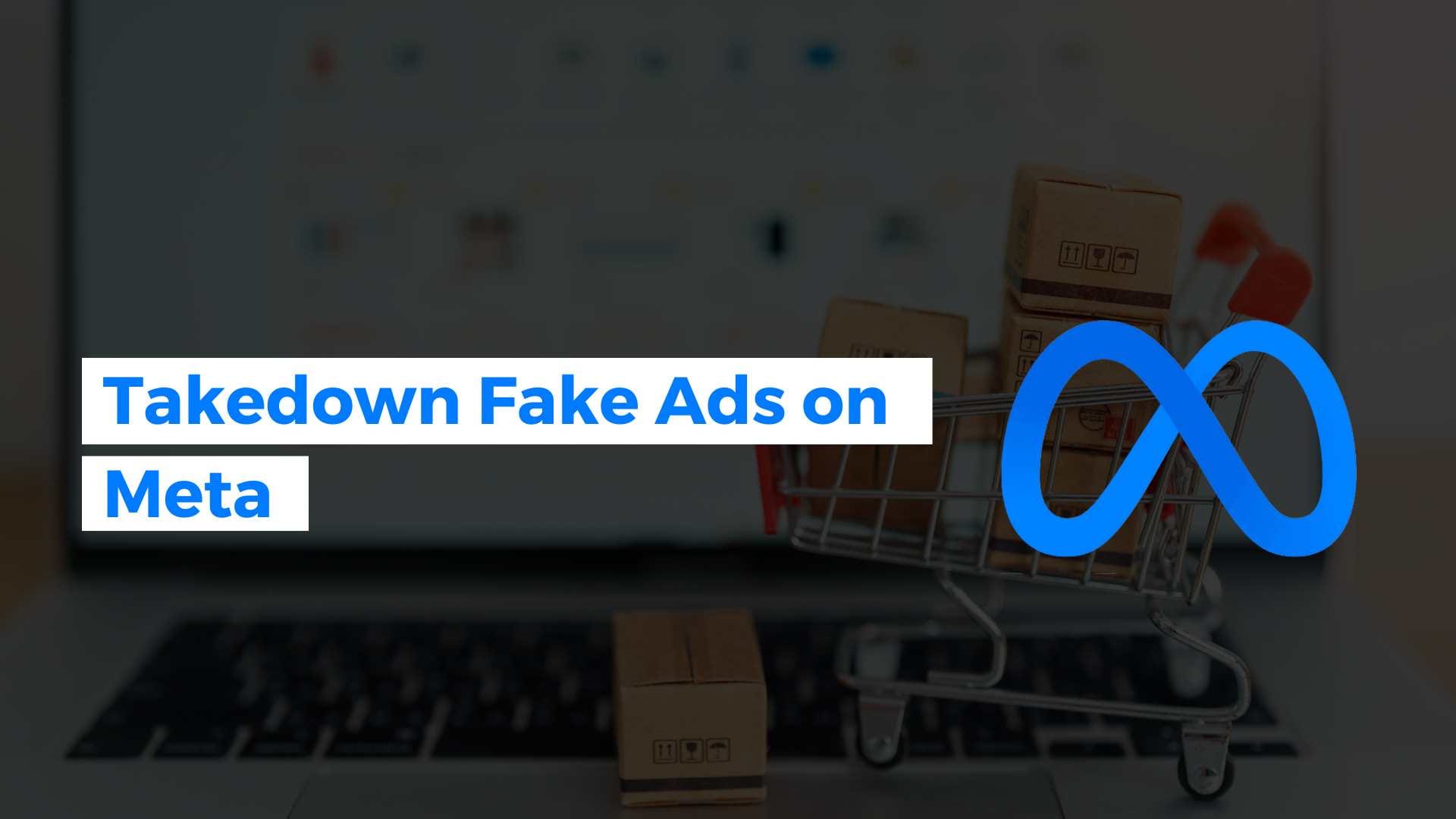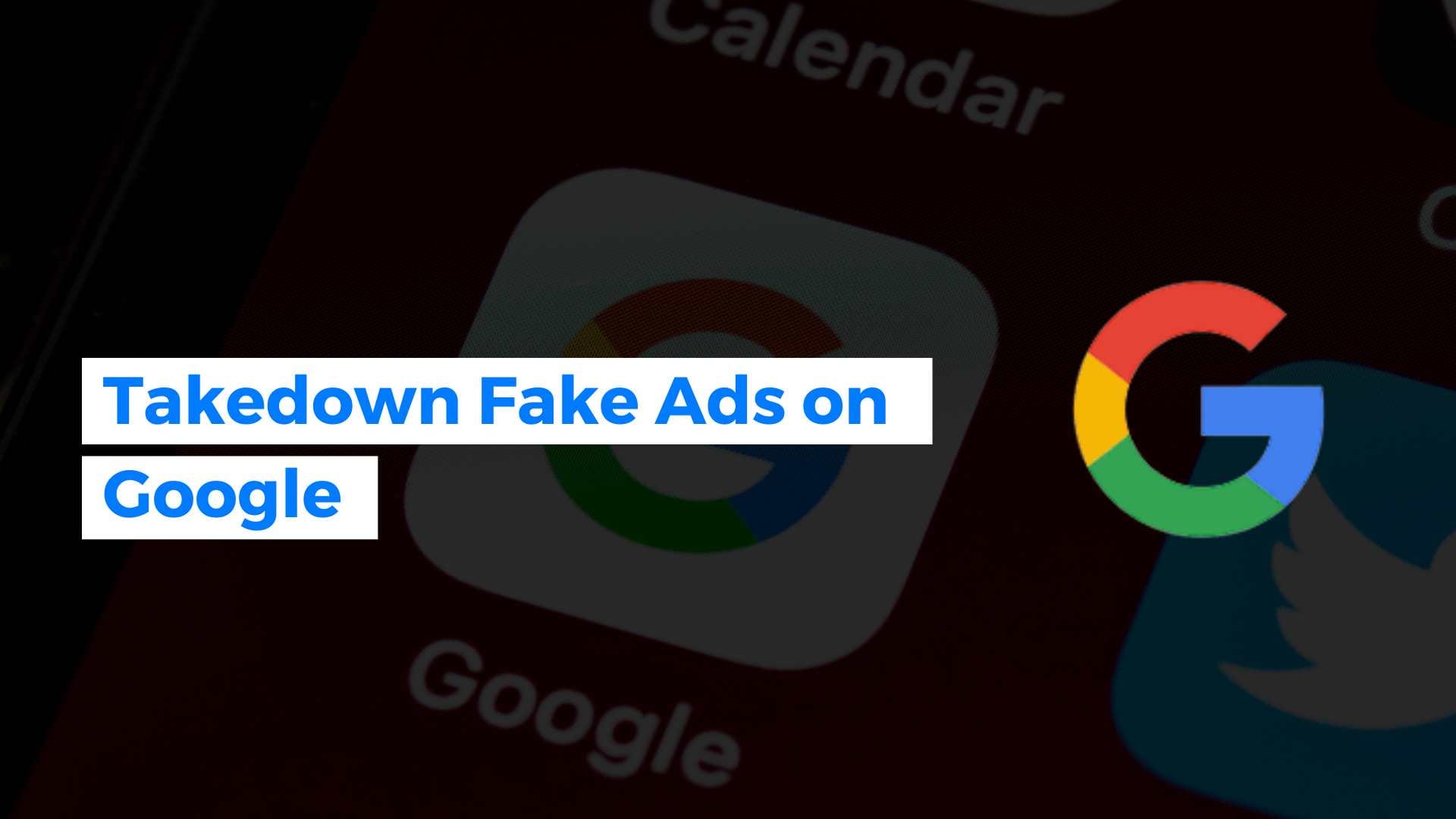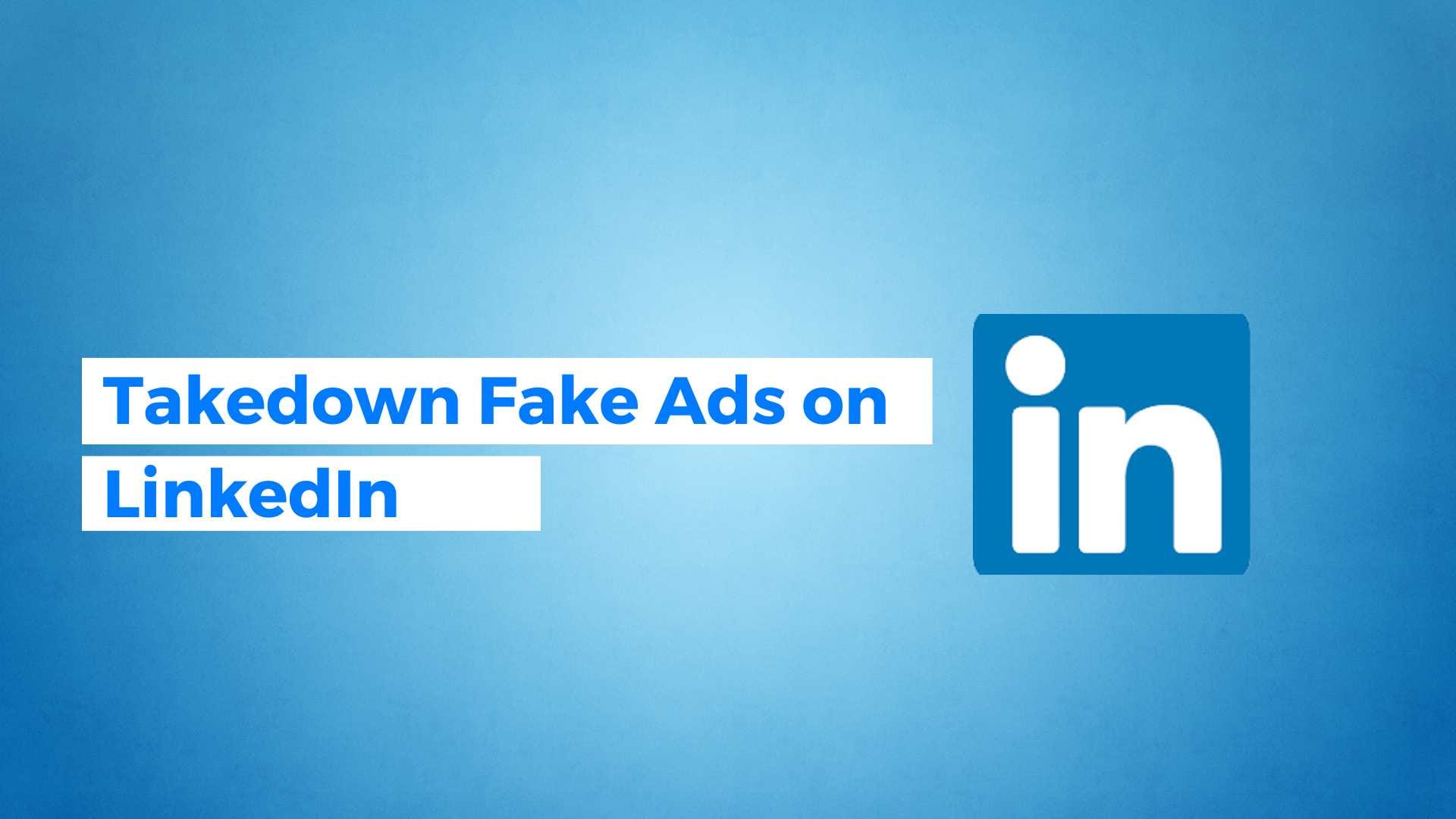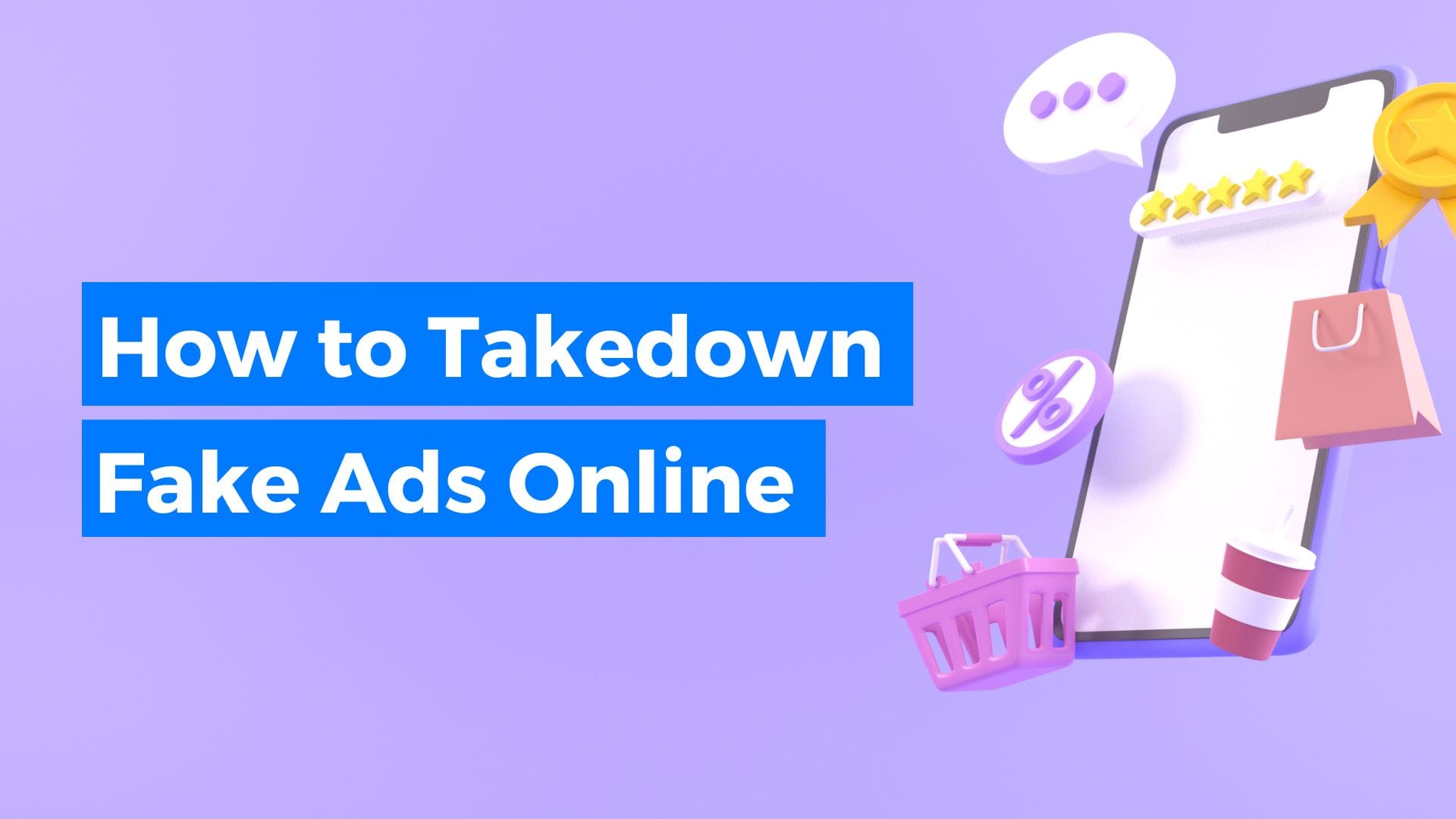A Step-by-Step Guide to Removing Fake and Scam Ads
The internet is flooded with advertisements promising unbelievable discounts, exclusive deals, and must-have products. But not all ads are what they seem. Scammers have mastered the art of deception, using fake ads to lure unsuspecting customers into buying counterfeit goods, sharing personal information, or even falling victim to financial fraud.
For brands, these fraudulent ads are more than just an annoyance—they erode consumer trust, damage reputations, and divert revenue to bad actors. The longer they stay online, the greater the risk to both businesses and customers.
Taking down fake or scam ads is a part of cybercrime detection and preventive activities to protect the targeted audience and make the digital world a safe place. Navigating the challenges of fraudulent ads requires effective countermeasures to reduce the significant risks to consumers and businesses in the same way. Combating these fake ads on digital platforms, especially social media depends on excellent takedown solutions that are highly automated.
Understand and Detect the Fake/Scam Ads
The alarming rise of deceptive advertisements promising fake products or services lures unsuspecting users to steal their personal data and information. Generally, appearing on social media platforms, search engines, and websites, these fake ads utilise convincing visuals and language to mislead the users. The fake adverts usually duplicate popular brands or copy a genuine website with a deceptive domain name to trick the victims. Generally, fake/scam ads are of the following types –
- Phishing Scams,
- Click Fraud,
- Domain Spoofing,
- Ad Injection,
- Click Injection,
- Pixel Stuffing,
- Ad Stacking, and
- Cookie Stuffing
The negative impacts of fake ads extend beyond the individual victims. Eroding consumer trust and damaging brand reputation, these fraudulent activities require urgent attention!!
Factors Responsible for Fake/Scam Ads

The surge in fake/scam ads is not a coincidence. Several factors trigger this rising trend that not only contributes to significant financial losses for businesses but also a general decline in the integrity of the advertising ecosystem.
Take a look at the driving factors that are responsible for fake/scam ads –
- Technological advancement – The rapid advancement in technology acts as a catalyst to create sophisticated fake ads. The fraudsters are now able to impersonate genuine activity with automated bots. Either by mimicking human behaviour or generating fake clicks, the scammers scale their operations efficiently. Due to the difficulty in distinguishing genuine activity, it is easier for criminals to execute ad frauds on a large scale.
- Weak regulatory framework – Operating with minimal regulation, the digital advertising industry creates a thriving environment for fraudulent activities. As digital and social media platforms lack stringent verification processes for advertisers, scammers can easily create fake accounts and run deceptive ads. The absence of robust regulatory oversight leads to significant consequences for these fraudulent practices.
- Increased use of social media – The rise of social media platforms influences the surge of takedown fake ads on Meta, Google, and LinkedIn. These platforms create easy avenues for scammers to reach potential victims. By easily blending fraudulent ads into user feeds and making them appear legitimate, the scam ads trap the potential victims.
- Psychological exploitation – Scammers often use psychological triggers like urgency tactics (limited-time offers), emotional appeal (charity scams), or attractive visuals to lure users into engaging in manipulative content. As a significant percentage of consumers have fallen victim to social media scam ads, this is a concerning matter for the cybercrime prevention squad.
- Lack of consumer awareness – Many consumers remain unaware of the tactics used by the scammers. This lack of knowledge not only allows fraudulent content and scammers to thrive but also makes individuals more susceptible to fake ads.
Recognising the warning signs is the first step to identify and report suspicious activities. Enhance your awareness to address the issues and combat fake ads effectively!!
How to Take Down Fake Ads and Scam Ads on the Internet
The prevalence of fake and scam ads in today’s digital landscape requires effective detection and prevention strategies. Protect targeted audiences from financial losses and identity theft and create a safer online environment only by embracing the following strategies –
Take Down Fake/Scam Ads on Meta (Facebook and Instagram)

Meta actively works to combat fake/scam ads by employing automated systems and manual reviews. Use these tools to identify and take down fraudulent content. However, users can play a significant role by on-time reporting to the authority. As this process requires the highlighting of specific instances of misleading advertising, the users need to follow the below steps –
1. Utilising Reporting Tools
On Meta platforms, if you have questions in your mind regarding an ad, click on the three dots in the upper right corner. Select ‘Report Ad’ and follow the prompts to report it as misleading or fraudulent.
2. Present evidence
At the time of reporting, must provide evidence to the proper authority to support your claim. Examples are screenshots or links that copy legitimate sources. These will help to expose the deceptive ads.
3. Contact support
If the fake/scam ads are not removed promptly, reach out to Meta’s support through their Business Help Center for further assistance.
Take Down Fake/Scam Ads on Google

Prioritising the removal of fake/scam ads on Google is necessary to manage the integrity of Google’s advertising ecosystem. Promptly reporting suspicious ads and protecting others from potential scams not only mitigate risks but also set positive examples for a safe online environment. Use the following proactive approaches to address emerging threats and benefit the consumers, brands, and the platform itself –
1. Use Google’s Ad Feedback Tool
Click on the ad and select the option ‘Report this ad’. Choose the reason for reporting something like misleading or scam and submit it to prompt the takedown steps.
2. File a complaint
For more severe cases, file a complaint through Google’s Ads support page. Present to the authority the detailed information about the ad and its misleading nature.
3. Track results
After submitting a report, don’t forget to keep track of your reports and necessary follow-ups. Google always prioritises managing its reputation as a trusted platform for information and advertising. Google may take time for investigation but will surely act against ads that violate their policies.
Actively combating fake/scam ads, Google always reinforces its commitment to providing reliable services and making users feel secure when engaging with ads.
Take Down Fake/Scam Ads on LinkedIn

As a reputed job and opportunity-seeking platform, LinkedIn needs to safeguard its users from fake/scam ads. If the platform does not take effective takedown steps for fraudulent content, then these ads will undermine the trust that users have in this professional networking platform. To maintain the platform’s integrity, safeguard brand reputation, and enhance advertising effectiveness, LinkedIn should set a positive example to reduce the overall prevalence of fake/scam ads. In this regard, the users need to play a crucial role in supporting this platform’s credibility. Take the following proactive approaches –
1. Direct reporting from the ads
Click on the three dots in the upper right corner of the ad and select ‘Report this ad’. Choose the appropriate reason for reporting and submit.
2. Notify LinkedIn support
If you persistently encounter fake ad issues, then contact LinkedIn support directly through their Help Center for prompt and additional action.
3. Educate your network
Raise the awareness of your connections by informing them about potential scams by sharing posts. It will help to mitigate the risks and enhance user protection.
Conclusion
Employing effective detection and prevention strategies is paramount to avoid the detrimental effects of fake/scam ads. When unsuspicious consumers fall into the traps of these fraudulent contents, they may inadvertently provide personal information or financial details to malicious actors. This not only affects privacy but also leads to identity theft or unauthorised transactions. Also, the businesses may experience diminished customer loyalty and trust for brand impersonation activities. Hence, collaboration with digital risk protection services is necessary apart from educating targeted audiences to create a trustworthy digital space for all stakeholders involved. Finally, a collective effort is essential to combat fake/scam ads effectively and foster a culture of vigilance among consumers and businesses alike.
Securing your online space is as important as safeguarding your offline markets.
Connect with us today and secure your brand and products in the online and offline landscape.

